Discover the best Sylhet tourist spots. Explore the top places to visit in Sylhet, including breathtaking tourist places and visiting spots. Experience the beauty of Sylhet with us.
Sylhet is a region with stunning natural beauty. Situated in the northeast of Bangladesh, this ancient township is rich in forest, minerals, and fisheries and is rich in natural beauty.
Apart from natural beauty, Sylhet has a famous history. The different tribals living in Sylhet have various languages and cultures. Tea gardens, Jaflong, Ratargul Jalaban, Hakaluki haor, Lalakhal, Bholaganj, Bichanakandi, Tamabil, hills, and waterfalls are all tourist destinations in Sylhet no one should miss when traveling to Sylhet.
People Also Read: Amazing!! The Top 34 Best Travel Destinations In Bangladesh
Here is the list of the best tourist places to visit in Sylhet:
The 23 Sylhet Tourist Spot To Visit
1. Ratargul Swamp Forest/রাতারগুল সোয়াম্প ফরেস্ট
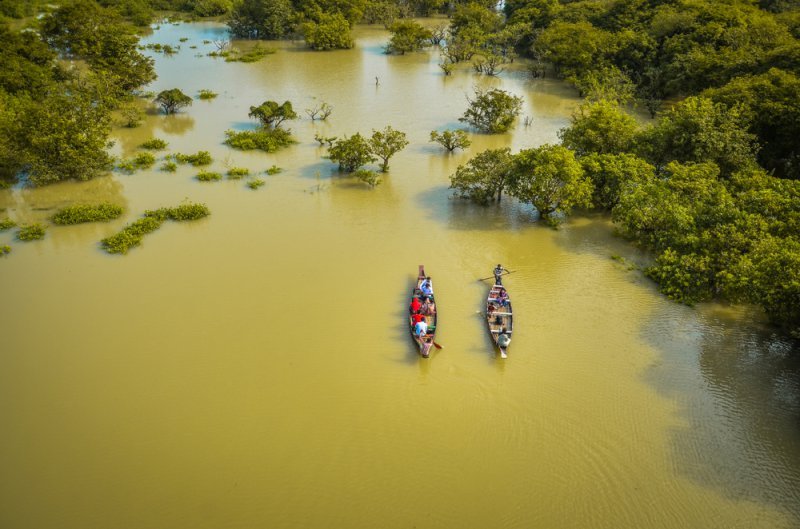
Ratargul is Bangladesh’s only Swamp Forest. It is located about 26km outside of Sylhet district city. The Ratargul forest is spread over an area of approximately 30,325 acres. The 504-acre site is full of forests, and the rest of the area is complete with small and big water bodies.
Ratargul is known as a “Sundarbans of Sylhet”. For four to five months out of the year, water completely covers the ground.
Tourists from all over Bangladesh flocked to see the forest trees submerged in the water. Many tourists called Ratargul the ‘Amazon of Bangladesh.’
In the rainy season, there are different species of birds seen in the trees’ branches, and then some wildlife also takes shelter in the branches of the trees.
Besides, thousands of migratory birds sit in the water bodies of Ratargul in winter. It is usually the right time to travel to Ratargul from July to October (towards the end of the monsoon).
Ratargul is a natural forest, and the local forest department planted several trees here, including Hijal, Varun, Karch. It also has about 25 species of water-tolerant plants, including Kadam, Jalibet, Arjuna.
In 1973, the Bangladesh Forest Department declared a 504-acre area of Ratargul forest as a wildlife sanctuary.
Precautions on travel to Ratargul
Be careful that snakes usually take shelter in branches of various trees after the forest sinks in the monsoon. There is also an infestation of the earthworm.
If you don’t know how to swim, keep a life jacket with you. Take umbrellas and raincoats if necessary.
2.Bholaganj/ভোলাগঞ্জ
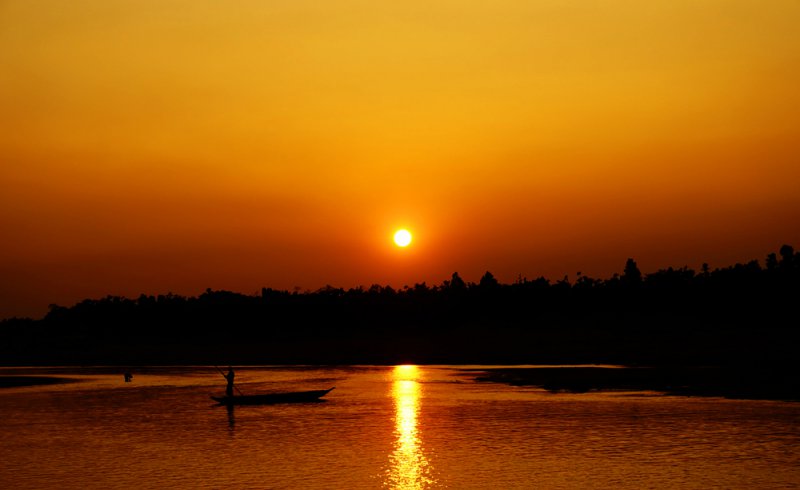
Bholaganj is the largest stone quarry area in the country wrapped in nature delusion located in Companyganj Upazila, bordering Sylhet district. The Bholaganj border stands as a natural wall with high mountains in the Indian state of Meghalaya.
The waterfalls coming down from that hill are on the water supply of the Dhaali river, and on the other hand, this water flow is the source of the natural form of Bholaganj.
The white stone that descends with green hills, cloud handiwork, and the rainy mountain slopes has added to the beauty of Bholaganj by mixing it with the sloping river.
The Dhalai river source is surrounded by facial stones known as Bholaganj Zero Point or White Stone. The white stone area looks more like a delta.
The Dhalai river entered the Bangladesh part and split into two parts, and reunited around.
Many stones come down from the Khasia Jaintia hills of India with the water of the Dhalai river. Bholaganj Ropeway was constructed from 1964-1969 to make stone extraction easier.
The 11-mile ropeway from Bholaganj to Chhatak, which was used till 1994.
At present, the ropeway towers carry monuments of time. The ropeway is closed, but the stone lifting does not stop. The stone is still the source of livelihood for many residents.
On the way from Ghat 10 to White Stone, you will see stones being picked up or carried by stones in small boats.
There is a land customs station on the border in Bholaganj. Limestone is mainly imported through this station. Hundreds of trucks enter Bangladesh every day with limestone.
There are two other beautiful places like Uthmasra, Turungchorar near The White Stone Area. However, it is better to skip plans to visit these two places unless it’s the rainy season.
When is the perfect time to visit Bholaganj?
The best time to visit Bholaganj is during the rainy season and the following few months. That means you can go there anytime between June and December. Sometimes, even if you see the beauty of stone, the river’s flow isn’t as high.
Travel Tips & Alerts Visiting Bholaganj Tourist Spot
- Try to go and come back early so that it’s not evening.
- Inform the boatman in advance how long the white stone will last. You can stay on time as you wish.
- Border space so is careful.
- Bholaganj can only be visited during the rainy season by the river.
- If you want to eat, you have to eat at the local hotels there.
- There are many streams in the river water during the rainy season, so you shouldn’t get too far into the water if you don’t know how to swim.
- You must bargain while renting vehicles.
- If you want to travel at a low cost, you can group around.
- If you want to visit Bholaganj white stone, Utmachora, and Turangchori in a day, you must leave very early in the morning.
- If you want, you can rent for the day to go to CNG from Amberkhana in Sylhet and visit the spots there. In this case, the cost might be a little higher.
3.Bichanakandi/বিছানাকান্দি – A Sylhet Tourist Spot
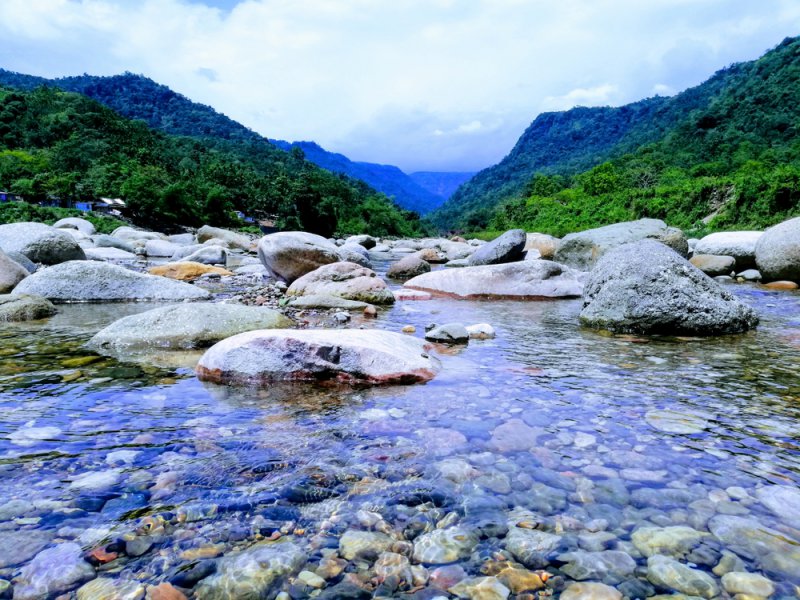
Read The Ultimate Guide of Traveling Bichanakandi from here.
from here.
4.Lovachora/লোভাছড়া
The clear water of the green hills and the low-lying water has given a different dimension to the environment.
There is also the Lovachora tea Garden, the old hanging bridge built in 1925, and the village of Khasia, which was started during the British period.
Amazing Lovachora has given a natural beauty to the beautiful illusion of mountains, rivers, and blue sky.
The work of lifting stones of workers in the Lovachora river is noticeable. In addition to tea gardens and hanging bridges, There are also natural lakes and waterfalls, Khasia Palli, Miraping Shah’s Shrine, Moghal Raja-Rani’s Antiquities, Ancient Dighi, Stone Quarry, and Social Forest Of The Forest Department.
You can go to The Lovachora at any time of the year. In the rainy season, the tea gardens here become green, and in winter, mountains and fog form a different world. In the morning, rabbits, deers, and wild cocks can be seen in the tea garden.
5.Shrine of Hazrat Shahjalal (R)/হযরত শাহজালাল (রঃ) মাজার
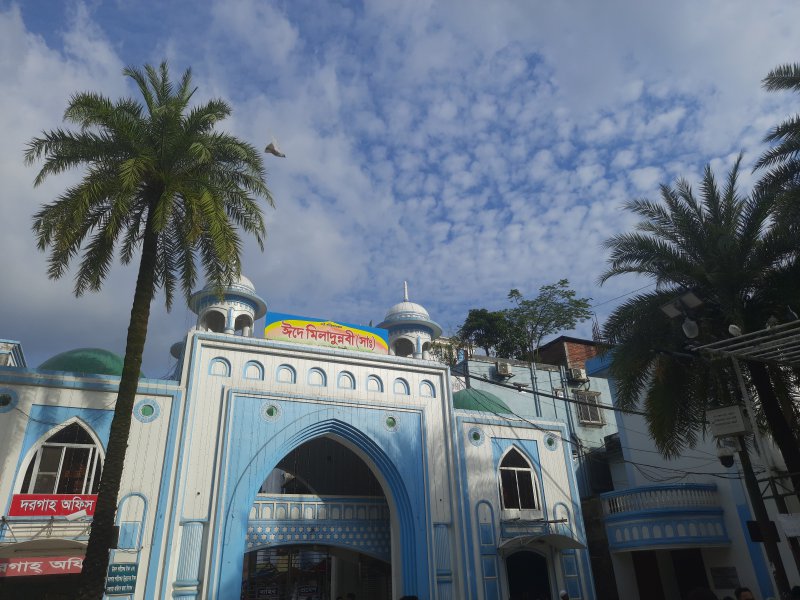
360 Sylhet city of Auliya is known as ‘Punyabhoomi.’ Hazrat Shahjalal (R) is one of the pirs and darveshs lying on the ground in Sylhet. And that’s why he’s called Olikul Shiromani.
People of all religions revered Hazrat Shah Jalal (r). Every year, people are seen flocking to The Shrine Of Hazrat Shahjalal (R) irrespective of religion.
What to see in Shrine of Hazrat Shahjalal (R)
The shrine of Hazrat Shahjalal (R) has a pond nearby. The pond is adorned with numerous gauzar fish. It is said that Hazrat Shahjalal (R) brought the gauzar fish when he came to Sylhet with 360 Auwalia.
Visitors rejoice when they see these fish floating in the pond and give them fish food. There’s a well by Shahjalal’s shrine.
Legend has it, Hazrat Shahjalal (r:) After learning about its spiritual power, Nizamuddin Auliya (r:) received him with great love and presented him with a pair of Surma-coloured pigeons as a sign.
That pigeon is now widely known as the Jalali Pigeon. The swarm of shrines is the one that pleases the pigeon’s comers.
To the south of the shrine is a two-foot-wide room with grilled stars. It was used as a toilet by Hazrat Shahjalal (R). It is heard in public that Hazrat Shahjalal (r) spent nearly 23 years here worshipping.
Through the Dargah Madrassa Building, on the left, mufti Nazimuddin Ahmad’s house has visitors to see various items like swords, straw, plates, bowl, etc., used by Hazrat Shahjalal (R).
The main dargah sharif of Hazrat Shahjalal (R) is a holy place; keep an eye on the dargah’s purity when you are there.
6. Jaflong/জাফলং
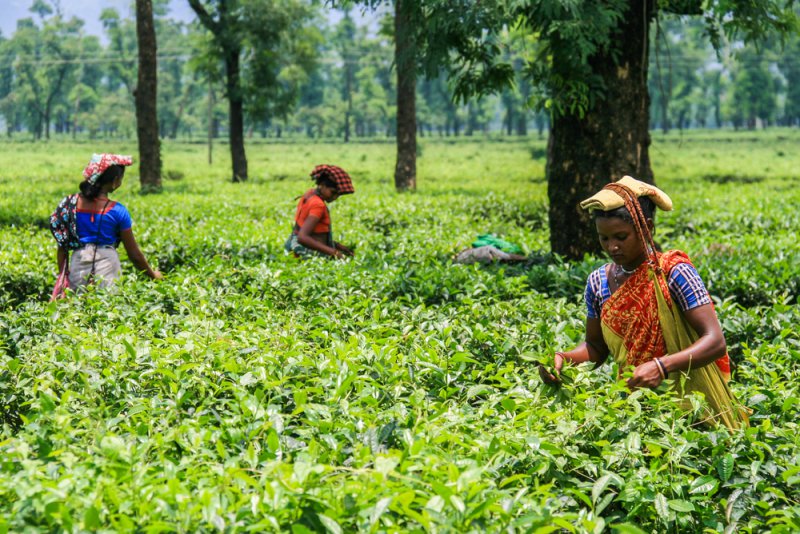
Jaflong is one of the most popular tourist places in Sylhet. Read The Ultimate Jaflong Travel Guide from here.
7.Sangrampunji fountain/সংগ্রামপুঞ্জি ঝর্ণা
The local name of the Sangrampunji waterfall is The Magical Fountain. It takes only 15 to 20 minutes to get from Jaflong Zero Point to the magical waterfall on the Indian border.
Bangladeshis can visit Songrampunji Waterfall under BSF guard. The water from the spring has accumulated in the mountains and created like a pond. There’s a total of three steps.
The best adventure place for travel crazy people is sangrampunji waterfall. The third step of the fountain has a tunnel, and the tunnel’s end is still unknown.
Courage and extra caution are important if you want to see all the waterfall steps across the slippery rocky path.
When is the perfect time to go to Sangrampunji Fountain
Generally, during the rainy season, all the waterfalls in Bangladesh see more water, so the rainy season is the right time to see the struggling waterfalls.
The waterfall contains a lot of water in July-September, but the water begins to decline as winter arrives. It is an excellent time to visit the magical waterfall in the rainy season and the next few months.
8.Tamabil/তামাবিল
Green hills surround Sylhet district. Poet Guru Rabindranath Tagore referred to it as a beautiful land. Located in Jaintapur Upazila, Sylhet, the natural beauty and border are called Tamabil.
If you move along Sylhet-Jaflong Road, you will see Tamabil 5 km before Jaflong. The distance from Sylhet district to Tamabil is about 55 km.
Tamabil is mainly a post on the border road between Sylhet in Bangladesh and Shillong in India.
From Tamabil, various places of view, including hills, waterfalls are seen in Meghalaya, India. So a lot of visitors come to Tamaybil to be fascinated by the beautiful landscape.
A blinking view of the huge mountains and waterfalls on the way to Tamabil multiplies the interest of traveling to Tamabil.
Nature’s arrangements are also there for the beauty of Tamabil to enjoy the beauty of Swachh (clean) Pani Lake, Tamabil Zero Point, and Jainta Hill Resort.
9.Sylhet Shahi Eidgah/সিলেট শাহী ঈদগাহ
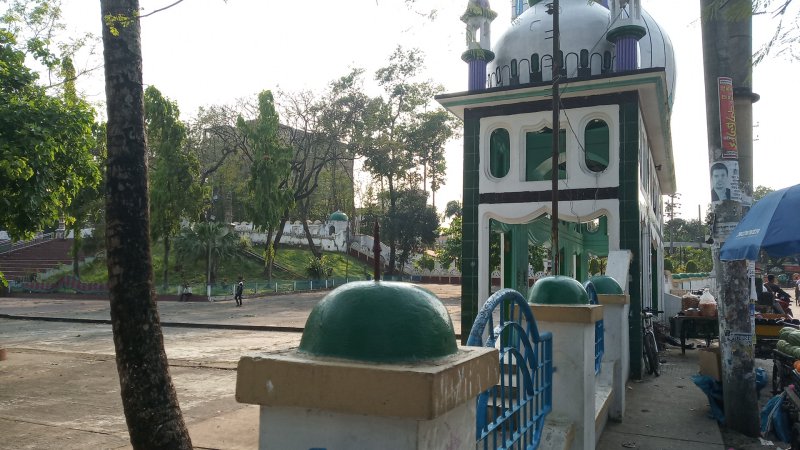
Sylhet Shahi Eidgah is one of the oldest historical structures in Bangladesh. Mughal faujdar Farhad Khan built the supphedred Shahi Eidgah in the 1700s. 22 steps have to be cross to enter the central premises of Shahi Eidgah, equipped with 15 domes.
There is 10 gate, big and small, around Eidgah surrounded by boundary walls. About 1.5 lakh Muslims can perform Eid prayers together on this Eidgah.
On the north side of Shahi Eidgah is a mosque known as Shahi Eidgah Mosque. And next to the mosque is the forest officer’s bungalow on the high hill—a huge pond in front of Eidgah where Muslims perform ablution (oju).
There is also the Sylhet center of Bangladesh Television on the south and the shrine of Shah Mirarji (R) and the Sylhet Meteorological Office, a visiting companion of Hazrat Shahjalal (R) the east.
Shahi Eidgah has now emerged as a witness to various historical events. In 1782, an anti-English coup was launched in Shahi Eidgah under two brothers Syed Mohammad Hadi and Syed Mohammad Mehdi.
has now emerged as a witness to various historical events. In 1782, an anti-English coup was launched in Shahi Eidgah under two brothers Syed Mohammad Hadi and Syed Mohammad Mehdi.
There are also events of the arrival of many national and international leaders, including Mahatma Gandhi, Hossain Shahid Sohrawardi, Shere Bangla Abul Kashem Fazlul Haque.
Because in the past, Shahi Eidgah was chosen for all kinds of large public gatherings in Sylhet.
10.Jitu Mia’s House/জিতু মিয়ার বাড়ী
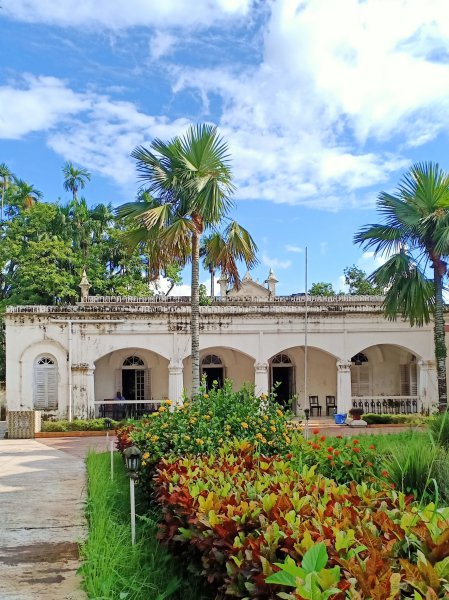
Jitu Miah’s Bari is located north of The Qazirbazar Bridge at Sheikhghat in Sylhet. The 1.365-area structure was built by Khan Bahadur Abu Nosher Mohammad Ehiya alias Jitu Mia Muslim architecture.
Khan Bahadur Started his career as Abu Nosher Mohammad Ehiya alias Jitu Mia Sub Register but was vice-chairman and honorary magistrate of Sylhet Municipality from 1897-1903.
At that time, the lavish, luxurious life of Jitu Miya’s family was widely discussed in Sylhet. At that time, this house’s drawing-room was adorned with Turkish pasha photographs, Russian Turkish war, royal palace Sanctorum of British the royal family.
And every day, hundreds of people who came to Sylhet used to receive hospitality at Jitu Miya’s house.
Former Assam Prime Minister Sir Saad Ullah, former Prime Minister of India Khawaja Nazim Uddin, former ICS Khan Bahadur Ghazanfar Ali Khan, rural poet Jassimuddin, Shere Bangla A K Fazlul Haque, liberation war leader General Mag Osmani, and many unforgettable personalities had been guests at Jitu Miya’s house on various occasions.
Jitu Mia left all the property in 1924, referring to herself as childless, to keep her estate intact forever. The then deputy commissioner KB Ehiya was appointed motawalli of Waqf Estate. Motawali of the estate is currently appointed as the divisional commissioner of the Sylhet division.
In addition to the various furniture used by him in Jitu Miya’s house, the calligraphy of the Holy Qur’an and Hadith, black tables, and 20 chairs were noticed in the meeting room of the time. At present, 8 living houses inside the house are home edited by the Zamindar dynasty’s successors.
11.Ali Amjader Ghori/আলী আমজাদের ঘড়ি
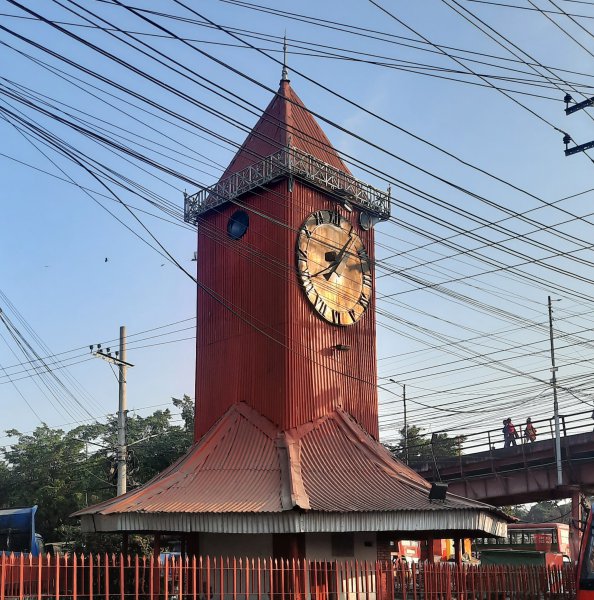
Ali Amjader Ghari, situated on the Surma River banks, is an essential structure in 19th century Sylhet. Ali Ahmad Khan, the zamindar of Prithimpasha in Kulaura, Sylhet, built this historic watchhouse next to the Qin Bridge in 1874.
The watchhouse was known as Ali Amjad’s watch after Ali Ahmad Khan’s son. Ali Amjad’s watch room, made of tin on iron poles, is 26 feet high. And the clock is 9 feet 8 inches in length and 8 feet 10 inches in width.
The ancient watchhouse was damaged in the 1971 liberation war. The clock was then renovated at different times. Ali Amjad’s watch is currently operational due to the last repairs made by Sylhet City Corporation in 2011.
12.Panthumai fountain/পান্থুমাই ঝর্ণা
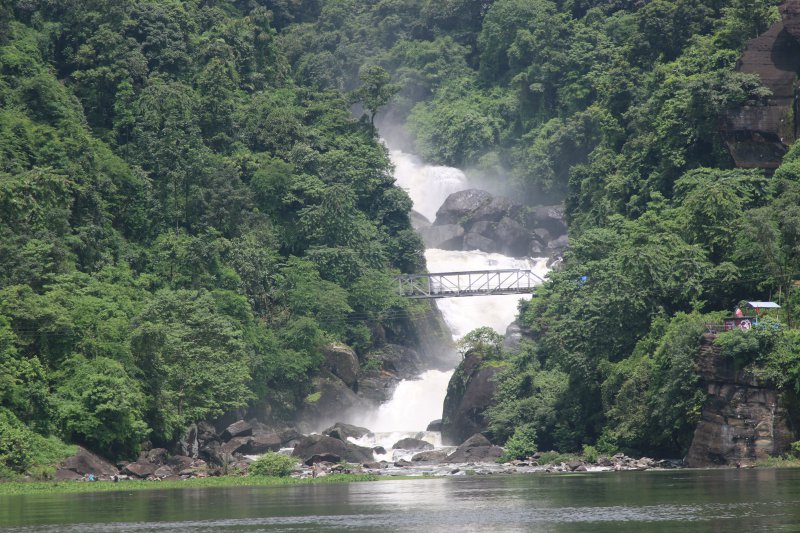
Panthumai is one of the most beautiful villages in Bangladesh. This village is in the Meghalaya hills on the Bangladesh-India border. It is located in the West Jaflong Union of the Goainghat Upazila of Sylhet.
Situated on the Meghalaya Hills banks and the Piyan River, this village has another example of nature, the Panthumai Waterfall. Panthumai waterfalls are known to the local people by different names. Some call it ‘Fatachari’s fountain,’ and some call it ‘Borohil Jharna,’ and in some’s eyes, it is ‘Mayaboti’!
Don’t be disappointed even if you look at the aggressive stream of water or the nature around it that comes down from the high mountains. Even after India’s original location, small dingy boats can be hired for Rs 100 and reach edited close to the waterfall.
Other people can see this waterfall’s beauty and take pictures and videos from a safe distance, as local fishermen say. And if you want, you can soak in the water that comes down from the Bangladesh part’s waterfall swells.
The perfect time to see the Panthumai waterfall: Panthumai can see the waterfall at any time. However, the rainy season is the ideal time to travel. Then there is a lot of water flowing all around. Panthumai fountain is one of the best tourist places in Sylhet.
Travel Tips & Alerts
- Travel in groups to reduce costs.
- Make it an excellent way to hire boats and CNG.
- Be careful when getting into the water.
- Ensure that the speed of a small stream of water is also very high during the rainy season.
- There are many stones in the water in bichanakandi, so be extra careful as you walk.
- Please don’t do anything that harms the environment and nature.
- Be polite with the locals.
- Return to Sylhet city before dusk.
13.Shrine of Hazrat Shah Paran (may Allaah have mercy on him)/হযরত শাহ পরাণ (রঃ) এর মাজার
Hazrat Shah Paran (RA) is one of the spiritual establishments of Sylhet city. Hazrat Shah Paran (R) was the nephew and chief followers of Shah Jalal (R), an Islamic prachanist who came to Bangladesh from the Middle East. The distance from Dargah of Hazrat Shah Jalal (R) to Shah Paran’s shrine (R) is only 8 km. On a large block in the Khadim Nagar area east of Sylhet city, Hazrat Shah Paran’s shrine (R) is located.
There is a common word of mouth in the mouth of The Mughals. On the western side of the shrine is a mosque built in Mughal style. A short distance from the main shrine’s pond is a room for female tourists, a rest house for foreign tourists, and a pond for Aju Gosal (ablution-bath).
In 1303, there was information about the arrival of Hazrat Shah Paran (R) in Sylhet with Hazrat Shah Jalal (R), but it was not known how and when Hazrat Shah Paran (R) died. The visit to the shrine by hundreds of travelers every day clarifies Hazrat Shah Jalal (R) in establishing Muslim rule in the Sylhet region and promoting Islam.
14.Lokkhonchora/লক্ষনছড়া
Lokkhonchora is a sightseeing site near Panthumai Waterfall in Goainghat Upazila, Sylhet. If there is a Panthamui fountain on your travel list, you can easily visit Lokkhonchora from Panthumai. If you want, you can roam around together in a day with bichanakandi, panthumai waterfalls, and lokkhonchora.
You will reach Lokkhonchora after twenty minutes beside the Indian border through the village. There are rocky shripats created from the fountains of India in the form of a lot of bichanakandi. The lake way under the bridge built to ply on the Indian border looks great. And in the rainy season, this beauty of lokkhonchora becomes more unparalleled.
15.The Keane Bridge/ক্বীন ব্রীজ
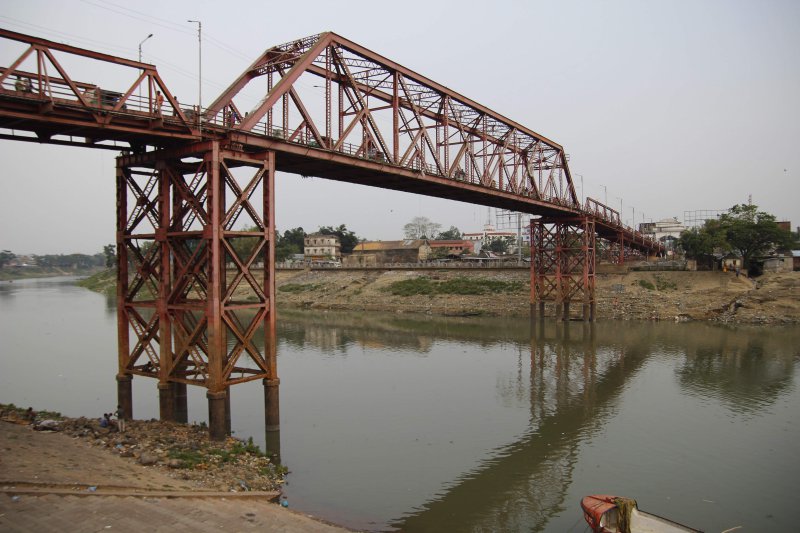
The Surma river flows through the center of Sylhet, the divisional city of Bangladesh. And the iron bridge over the Surma River is called the Keane Bridge. The “gateway” site in Sylhet city is well known to all as a traditional place in Sylhet. The length of the Keane Bridge built-in 1936 is 350.52 meters, and the width is 5.4 meters.
In the thirties of the 19th century, Assam’s Government Michael Keane visited Sylhet. Then there was the need to build a bridge over the Surma River. The bridge was built and named in memory of Michael Keane. Michael Keane was the Assam’s government from 1932 to 1937.
During the Great Liberation War in 1971, Pakistani forces blew up part of the bridge with dynamite. Later, in 1977, in collaboration with Bangladesh Railways, the bridge was rebuilt.
16.Malnichora Tea Garden/মালনীছড়া চা বাগান
Malnichora Tea Garden is the largest and first established tea garden in the subcontinent in Bangladesh’s Sylhet district. In 1849, the garden began its journey on 1,500-an-area, holding Lord Hardson’s hand. The tea garden is currently run under private supervision but is well known as a favorite place for tourists to have a beautiful time.
To see the primitive, remarkable beauty of the tea garden, you have to go to the Malnichora tea garden, a short distance from Sylhet International Airport. But it is better to take the authorities’ permission to avoid unwanted complications before entering the garden. At present, oranges and rubber are cultivated along with tea.
17.Jainta Hill Resort/জৈন্তা হিল রিসোর্ট
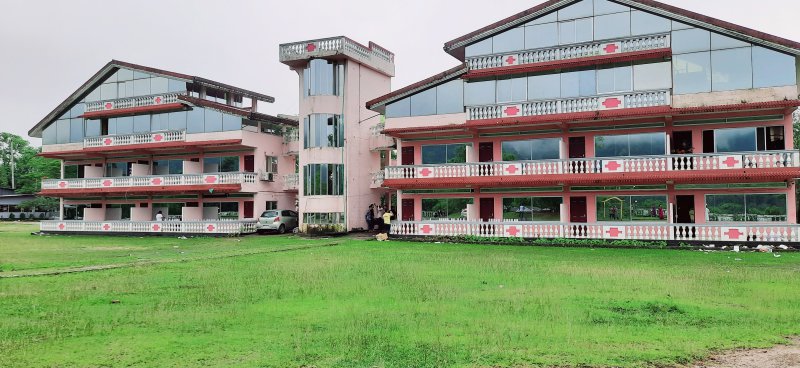
Jainta Hill’s Resort has been set up at Aloo Bagan in Jaintapur Upazila of Sylhet. Tourists rush to this hill center to see the magnificent paradise of nature as well as the waterfalls of Meghalaya hills. So jainta hill resort has the facility to stay and eat and see the beauty of the hills. Apart from hills, waterfalls, rivers, and beautiful sky, the jainta hill resort is also a sight to beseeched workers bringing stones from deep in clear water. If you don’t want to stay in the resort, you can visit this dream with the authorities’ permission.
Jainta Rajbari is just 2 km from Jaintia Hill Resort, and Jainta Rajbari is located at a distance of 5 km. Also, 1 km from Jainta Hill Resort is The Tamabil Land Port.
Expenses
There are quite reasonable accommodations at Jainta Hill Resort. You can spend the night in AC-non AC rooms and rooms at Rs 2500 to Rs 5000 here.
Contact Address:
Potato Garden, Jaintapur,
Jaflong Road, Sylhet – 3156
Mobile: 01711-739183
Facilities at Jainta Hill Resort
- Public telephone system
- 24 hours room service
- System of public security
- Well-range restaurants
- Gift Shop
- Continuous power system
- Car Parking
- Prayer arrangements
- Rent a car
- Help with travel information
18.Dreamland Park/ড্রীমল্যান্ড পার্ক
Dreamland Monument and Water Park are located in Hilalpur village of Gulabganj on Sylhet-Jakiganj road, just 10 km from Sylhet. Built on about 100 areas, the park has all the stunning modern rides and all the water park arrangements. Dreamland Park is combined with natural beauty with modern entertainment that impresses visitors to this Dreamland park. Dreamland Park is open seven days a week, and entry tickets must be collected for Rs 100 to enter Dreamland Park. Dreamland Park is open to all from 11 am to 8 pm, 7 days a week. And the water park is open from 11.30 am to 7 pm.
19.Nazimgarh Garden Resort/নাজিমগড় গার্ডেন রিসোর্ট
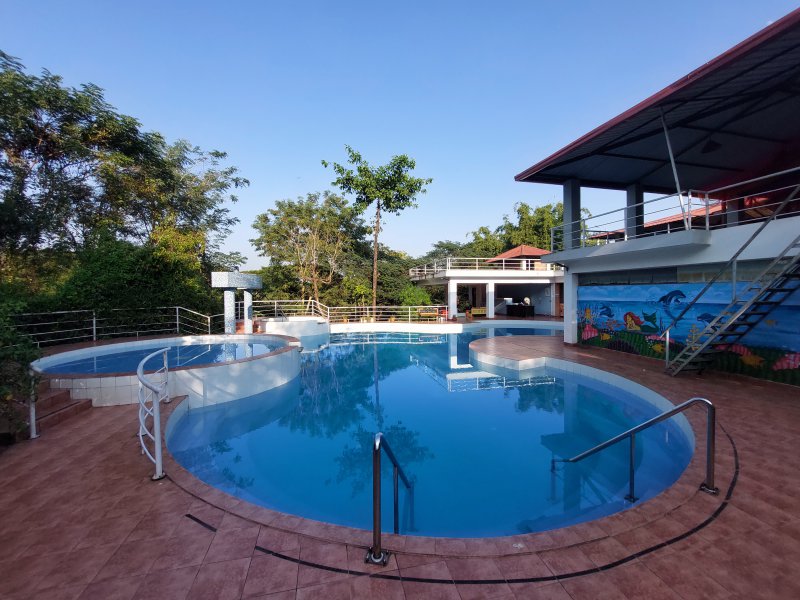
Nazimgarh Garden Resort is situated on about 6 acres of land in the lap of Khadimnagar hills of Sylhet Sadar Upazila. The beautiful resort, which is as beautiful as the picture, enjoys Khasia Palli and Tea Garden’s charm.
Contact
- Sylhet Office: Nazimgarh Garden Resort Khadimnagar, Sylhet.
- Mobile: +88-01926-667444, 01747-200100, 01712-027722.
- Email: reservation@nazimgarh.com
- Website: www.nazimgarh.com
Dhaka Office
- 110, Tejgaon Industrial Area (2nd Floor), Tejgaon, Dhaka.
- Phone: 02-8870579, 01730-712600, 01729-097849
Various facilities of Nazimgarh Garden Resort:
- Continuous power and telephone system
- Conference Room
- Tea and coffee making equipment
- WiFi facility
- Swimming pool
- The sap
- Gym
- Rent-a-car
- Picnic or education tour arrangements
- Support on foreign money exchanges
20.Satchori National Park/সাতছড়ি জাতীয় উদ্যান
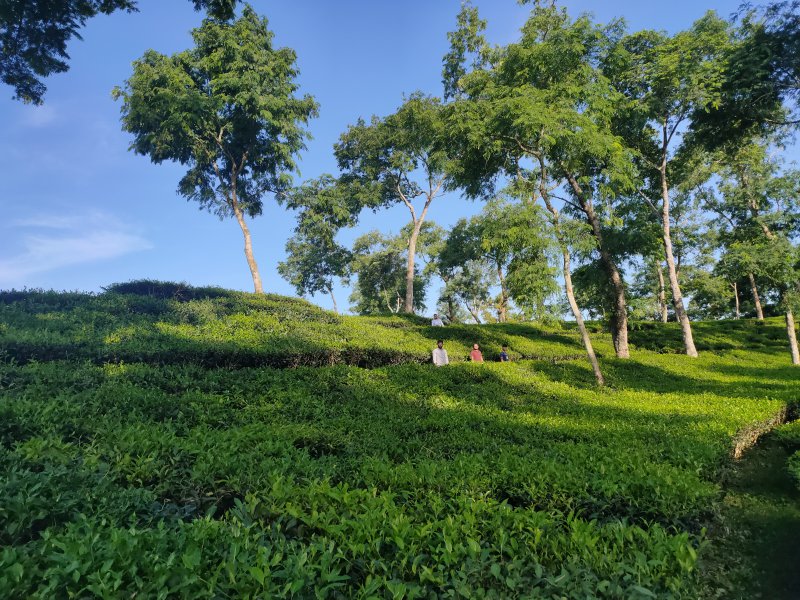
In 2005, the satchori national park was established in Raghunandan hills in Chunarughat Upazila of Habiganj district of Sylhet division with about 243 hectares. The place is named after seven mountain rhymes or waterfalls located in the naturally built Satchori National Park. Earlier, Satchari National Park was known as ‘Raghunandan Hill Reserve Forest.’
Satchori National Park includes about 145 species of plants. The forest also has 6 species of migratory animals, 18 species of reptiles, 24 species of mammals, and about 149 species. Among the animals found in Satchori National Park are mechobagh (tiger species), meteors, hanuman, pig, monkeys, glasses hanuman, and various snake species. Birds include redhead trungon, dhanesh, dove, parrot, eagle, maina, etc. There are 9 tea gardens, tribal and local villages, and cropland around Satchhari National Park. As a result, the lifestyle of families living in the park’s vicinity is mostly dependent on forest resources.
What you will see in Satchori National Park
3 trail in the forest has been constructed under a fantastic program for tourist travel facility.
Half hour trail:
If you travel on this 1 km long trail, you will travel to Tippara, the only village in the forest.
** One hour trail:
There is no alternative to this trail if you want to know the variety of animals and plants in Satchori Park.
Three-hour trail:
The trail, which extends up to 6 km, is ideal for bird-loving tourists. At the edge of this trail is the Agar forest.
Guide
If you want to track in the forest, you will get a guide from the Search or Information Centre of Satchori Park at Rs. 200 to Rs. 500 as per the trail. Take a guide to avoiding risks if you want to enter the deep forest, even if you have maps on the office premises.
Tree Adventure Activity or Tree Activity
Tree Activist or Tree Adventure has recently been launched at Satchora National Park to add a different dimension to travel for travel crazy tourists. Here is a chance to do various adventure activists on trees for Rs 100.
Park Entry Costs
To enter the Satchori Park, any adult man or woman has to pay the equivalent of Rs. 20 per person, 10 taka per person to the adult children and students, and $5 per person for foreigners’ entry. Also, if you want to have a picnic in Satchori National Park, there is an opportunity to enter the park at the rate of Rs 10 per person. And parking in the park requires a fee of Rs 25 per car.
Satchori National Park Travel Advice
- Satchori Park does not have a mobile network so inform your family or loved ones about your location before entering the forest.
- Avoid entering the depths of the forest without a guide.
- Don’t disturb the wild animals.
- Do not spoil the atmosphere of the park by throwing dirt.
- Group 1 or 2 people in the interest of security and reduce costs without coming on a trip.
- Be careful about the joker when traveling in the forest during the rainy season.
- Leave the park as soon as evening.
21.Lalakhal/লালাখাল
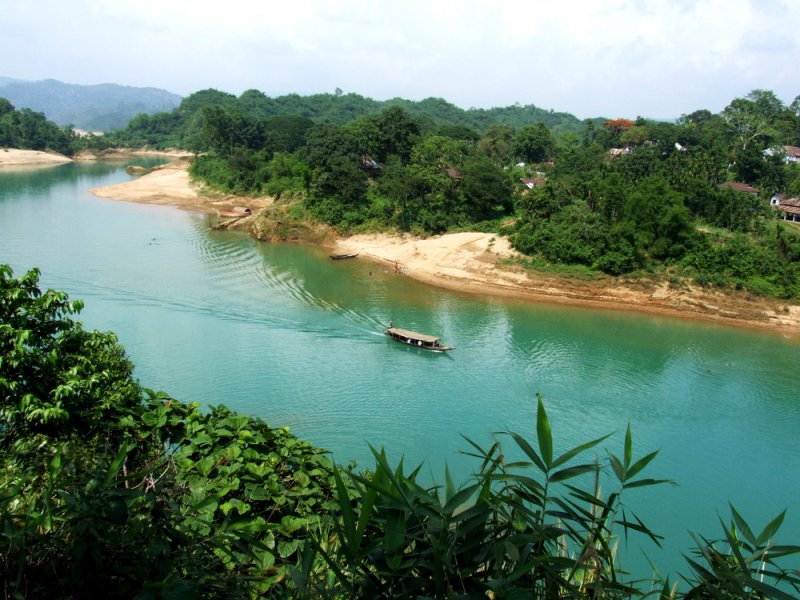
Lalakhal is located in the divisional city of Sylhet Jaintapur Upazila. The Lalakhal river has entered Bangladesh from the Cherapunji Hills in India, about 35 km from Sylhet. Rivers, mountains, forests, tea gardens, and various species of trees have given unique features to the nature of Lalakhal. You have to visit Lalakhal to see the Jyotsna wash river or cloud hills and river scene in a full moon. The water in Lalakhal is very muddy during the rainy season. So November to March, winter is the right time to visit Lalakhal.
Blue, green, and transparent water are seen in different parts of Lalakhal. If you want, you can go to Lalakhal in a speedboat or boat over the river with a transparent water queue in the Tamaybil section. The 45-minute journey will keep you speechless with the beauty of Lalakhal. There are no boats in the river after dusk, so it’s best to go back in the evening. It would be wise to prepare for the night to be fascinated by the form of Lalakhal.
22.Hakaluki Haor/হাকালুকি হাওড়
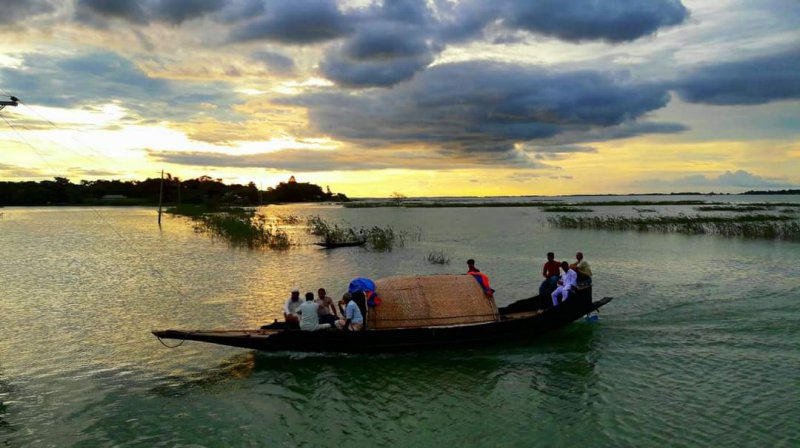
Hakaluki Haor is the largest freshwater wetland in Bangladesh, with 5 Upazilas in Sylhet and Moulvibazar. Hakaluki Haor is the largest freshwater wetland in Bangladesh. It also has about 100 species of local birds. Travelers rushed to The Hakaluki Haor in awe of the beet land, the native life, and the migratory birds.
During a trip to Hakaluki Haor
The Hawkaluki Haor is the best place to see the guest birds from November to February. At this time, the noise of the guest birds around The Haor is mouthed. And during the rainy season, The Haor forms the sea. So if you want to enjoy your son during the rainy season, you have to come this time in June-August.
23.Dibir Haor/ডিবির হাওড়
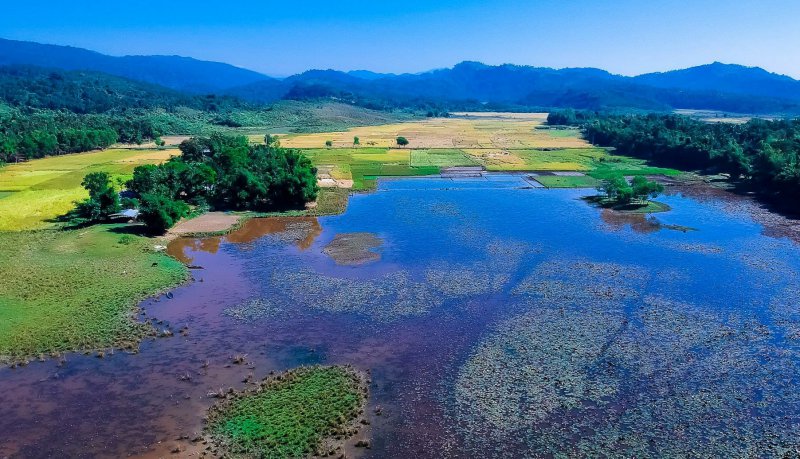
Dibir Haor is located at the foot of the Hills bordering Bangladesh India at Jaintapur in Sylhet. The distance from Sylhet city to Dibir Haor is 42 km. There are a total of four bills called Yam, DB, Harfkata, Kendri Bill. After the rainy season, the bills became the state of waterlily.
Then thousands of red curses spread across all the bills. In the morning, thousands of red curses light up the surroundings. May nature decorate the bills with a red curse in the sweetness of their wishes. A morning on the shapla bill is enough to remember any travel father for the rest of his life. Dibir haor has also gained recognition as Shapala Bill.
There is also a ruined temple about two hundred years old. It is said that a king from the Kingdom of Jainta drowned somewhere in Dibir Haor. It’s said that the temple was built for him. There is also the burial place of King Ram Singh between Harfkata and Dibir Bill. In winter, the reign of the migratory birds started all over this Howrah. At that time, the guests of various species like Sadabak, Jalmayuri, and Pankauri face the mill of birds around Dibir Haor.
When to go
The red shapala flowers of Dibir haor are usually seen from September to December. November is the best time. And to see the form of waterlily, you have to reach before the sunlight blooms. In the early hours of the morning, thousands of shapalas matched themselves in the water of the bill to flash their beauty.
How to go from Dhaka to Sylhet by bus
From Gabtoli, Fakirapul, Saidabad, and Mahakhali bus terminals in Dhaka, morning to 12.45 am, various AC/non-AC buses of the green line, Saudia, S Alam, Shyamoli, Ena, etc. left for Sylhet. The ticket price at Basved is Rs 475 to Rs 1200 per person.
How to go from Dhaka to Sylhet by train
From Kamalapur railway station, Parbat, Jayantika, Upobon, and Kalni Express trains travel towards Sylhet at different times of the day. The fare for the train by category ranges from Rs 265 to Rs 750 per person.
How to go from Chittagong to Sylhet by train
Two trains from Chittagong called Paharika, and Udayan Express, left for Sylhet. The price of tickets per person ranges from Rs 375 to Rs 1200 per person in the category of these two trains.
You can visit the train’s website at the time of departure, weekly at www.railway.gov.bd, booking tickets online.
Conclusion
When it comes to exploring, Sylhet is a city that truly has it all! With abundant natural beauty, cultural heritage, and modern comforts, there’s something to suit everyone’s interests. This charming and diverse city is the epitome of adventure, offering visitors a wealth of sights and experiences.
From breathtaking tea gardens to historic landmarks, there’s never been a better time to experience the richness of this incredible destination. So what are you waiting for? Pack your bags and get ready to dive into the best that Sylhet has to offer. So gear up, friends, and let’s go on a Sylhet adventure! I hope you find the article “The 23 Best Places in Sylhet [Tourist Spot]” helpful.
